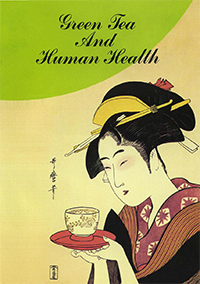1) I.Oguni and Y.Hara, “Green tea has many medicinal activities for preventing disease such as cancer, cardio-vascular diseases and diabetes“. (published by The Chunichi-shinbun, Nagoya, Japan), PP.1-239(1990).
2) I.Oguni et al., Japanese J. of Nutrition, 47, 31 (1989).
3) I.Oguni, Metabolism and Disease, 29, 453, (1992).
4) I.Oguni et al., Agric. Biol. Chem., 52, 1879 (1988).
5) I.Oguni and Shujun Cheng, Annual Report of The Skylark Food Science Institute, No.3, 57 (1991)
6) Y.Nakamura et al., Proc. of International Tea-Quality-Human Health Symposium, pp.227-238 (Hangzhou, China, November, 1987).
7) K.Muramatsu and Y.Hara, J.Nutr. Sci. Vitaminol., 32, 613 (1986).
8) K.Goto, S.Kanaya and Y.Hara, Proc. of the International Symp. on Tea Science, 314(Shizuoka, Japan; August, 1991).
9) Y.Hara, T.Matsuzaki and T.Suzuki, Nippon Nogeikagaku Kaishi, 61, 803 (1987).
10) H.Asai, Y.Kuno, H.Ogawa, Y.Haraand K.Nakamura, Kiso to Rinsshyo, 21, 163 (1987).
11) M.Shimizu el al., Yakugaku Zasshi, 108, 964 (1988).
12) T.Okuda et al., Chem. Pharm. Bull.,31, 1625 (1983).
13) Y.Hara and T.lshigami, Nippon Shokuhin Kogyo Gakkaishi, 36, 996 (1989).
14) T.Shimamura et al.,Jpn.J.Bacteriol, 44, 669 (1989).
15) M.Hattori et al., Chem. Pharm., Bull., 38, 717 (1990)
16) S. Sakanaka et al., Agric. Biol. Chem., 53, 2307 (1989)
17) F. Okada, Chagyo Kenkyu Hokoku, 48, 52 (1978).
18) T.Shimamura et al., Lett, Appl. Microbiol., 11, 38 (1990).
19) H.Nakane and K.Ono,Biochemistry, 29, 2041 (1990).
20) H.Inaba, Food Chemicals, 4 (No.1), 33 (1988).

